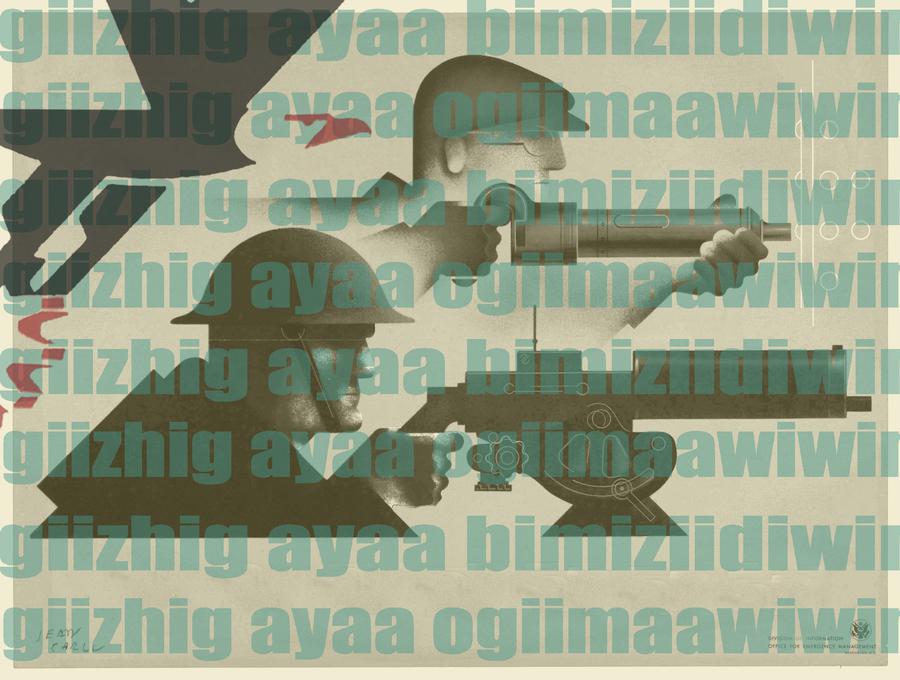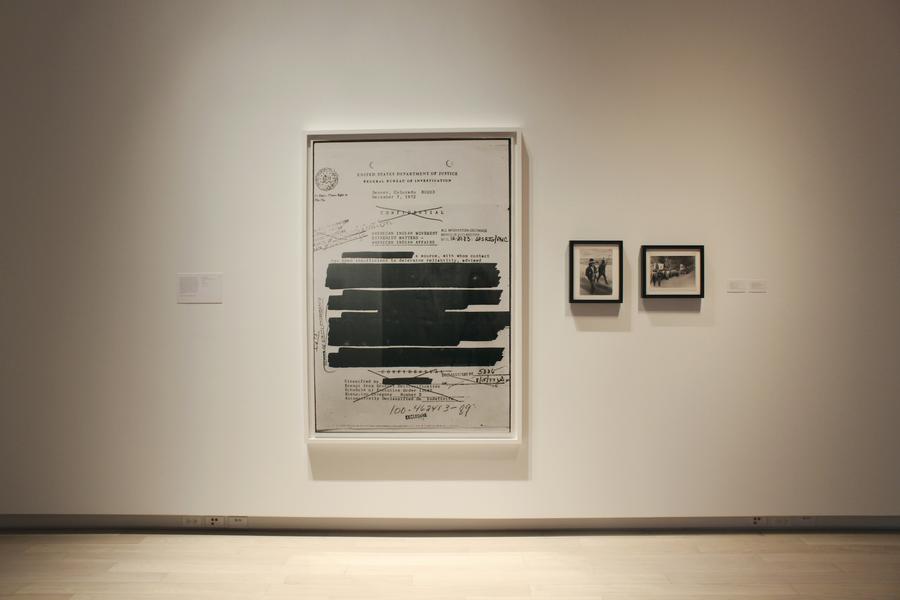Ghost Dance: Activism. Resistance. Art.
September 18 – December 15, 2013
Main Gallery, University Gallery, and Salah J. Bachir New Media Wall, The Image Centre (formerly Ryerson Image Centre)
Guest Curator: Steve Loft
Artists: Vernon Ah Kee, Sonny Assu, Scott Benesiinaabandan, Dana Claxton, Cheryl L’Hirondelle, Alan Michelson, Theo Sims, Skawennati and Jackson 2bears.
On January 1, 1889, Jack Wilson (or Wovoka), a young Paiute man, had a vision during an eclipse of the sun. […] Revealed to Wilson was a place where his ancestors were once again engaged in their favourite pastimes, where wild game and abundant food were restored to the lands. […] He interpreted the vision as the coming of a new age, one where Native and non-Native people would (finally) live in peace. This was the birth of the Ghost Dance. [...] It was, quite possibly, the first pan-Indian movement in the United States.[1]
This exhibition is not meant to be a comprehensive history of activism in Indigenous art. It is part of an ongoing journey. Colonialism has been the cause of the suffering, oppression and violence perpetuated against Indigenous people in Canada and many other countries, for centuries. But attributing the rise of resistance, activism and the art associated with it to colonialism itself, is disingenuous. It is the interactions of people which manifest the destructive ideologies inherent in colonialism. The events caused by these interactions change people and their societies. Indigenous art is not predicated on “colonialism”, but on the events caused by it.
As a curator and art historian I would posit that Aboriginal art is innately political. It is the culmination of lived experiences, from pre-contact customary societies through the colonial enterprise. It is tied up in histories that include both pre- and post-contact epistemologies, narratives empowered by continuity, inextricably inter-linked; and it is the assertion of cultural autonomy and sovereignty.
The artists in this exhibition - most, but not all, Aboriginal - have, and continue to engage in a particular activism, which I would characterize as “articulate resistance”, a social engagement specific to the history of colonization and continued racism. The work of Indigenous artists needs to be understood through the clarifying lens of sovereignty and self-determination, not just in terms of assimilation, colonization and identity politics […] Sovereignty is the border that shifts Indigenous experience from victimized stance to a strategic one.[2]
Ghost Dance examines the role of the artist as activist, as chronicler and as provocateur in the ongoing struggle for Indigenous rights and self-empowerment.
Force, no matter how concealed, begets resistance. (Lakota saying)
Steve Loft
Guest Curator
National Visiting Trudeau Fellow
[1] Candice Hopkins, "Can Beauty Be A Call to Action", in Close Encounters: The Next 500 Years, ed. Sherry Farrell Racette (Plug In Editions: Winnipeg, 2011), 65.
[2] Jolene Rickard, “Sovereignty: A Line in the Sand,” Aperture139 (Spring 1995): 51.
Event(s):
Special Tour
Steve Loft and special guest(s)
Wednesday, September 25
6:00 PM
Special Tour
Steve Loft and special guest(s)
Wednesday, October 23
6:00 PM
Special Tour
Steve Loft and Alan Michelson
Wednesday, November 13
6:00 PM
Special Tour
Steve Loft
Wednesday, December 11
6:00 PM
Exhibition Tours
Daily 2:30 PM
All events take place at The Image Centre (formerly Ryerson Image Centre), unless otherwise noted
This exhibition is made possible through the generous support of the Trudeau Foundation, the Ontario Cultural Attractions Fund, the Ontario Arts Council, the Canada Council for the Arts, the Toronto Arts Council, and the Paul J. Ruhnke Memorial Fund







Vernon Ah Kee, Lex Wotton Profile, 2013. Charcoal, crayon and acrylic on canvas (183x152 cm). Courtesy the artist and Milani Gallery, Australia

Scott Benesiinaabandan, Land [iswaswillbe] Life/Land [iswaswillbe] Government, poster (16x12”), 2013

Scott Benesiinaabandan, loose lips: self government, poster (16x12”), 2013

Dana Claxton, AIM #2, gelatin silver print, (60x42”), 2010. Collection of John Cook

Dana Claxton, AIM #4, gelatin silver print, (60x42”), 2010. Collection of John Cook
Curator Bio
Steve Loft
Guest Curator
Steven Loft is a Mohawk of the Six Nations with Jewish heritage. He is a curator, scholar, writer and media artist. In 2010, he was named Trudeau National Visiting Fellow at Toronto Metropolitan University (formerly Ryerson University) in Toronto, and Scholar in Residence at the new The Image Centre (formerly Ryerson Image Centre), where he is continuing his research into Indigenous art and aesthetics. Formerly, he was Curator-In-Residence, Indigenous Art at the National Gallery of Canada. Previous to that, he was the Director/Curator of the Urban Shaman Gallery (Winnipeg), Aboriginal Curator at the Art Gallery of Hamilton and Artistic Director of the Native Indian/Inuit Photographers’ Association. He has curated group and solo exhibitions across Canada and internationally and has written extensively on Indigenous art and aesthetics for various magazines, catalogues and arts publications and lectured widely in Canada and internationally. Loft co-edited Transference, Technology, Tradition: Aboriginal Media and New Media Art, published by the Banff Centre Press in 2005 and is the editor of the volume Coded Territories: Indigenous Pathways in New Media.
Installation Shots

Ghost Dance: Activism. Resistance. Art. (installation view), 2014 © Kate Tarini, The Image Centre

Ghost Dance: Activism. Resistance. Art. (installation view), 2014 © Kate Tarini, The Image Centre

Ghost Dance: Activism. Resistance. Art. (installation view), 2014 © Kate Tarini, The Image Centre


